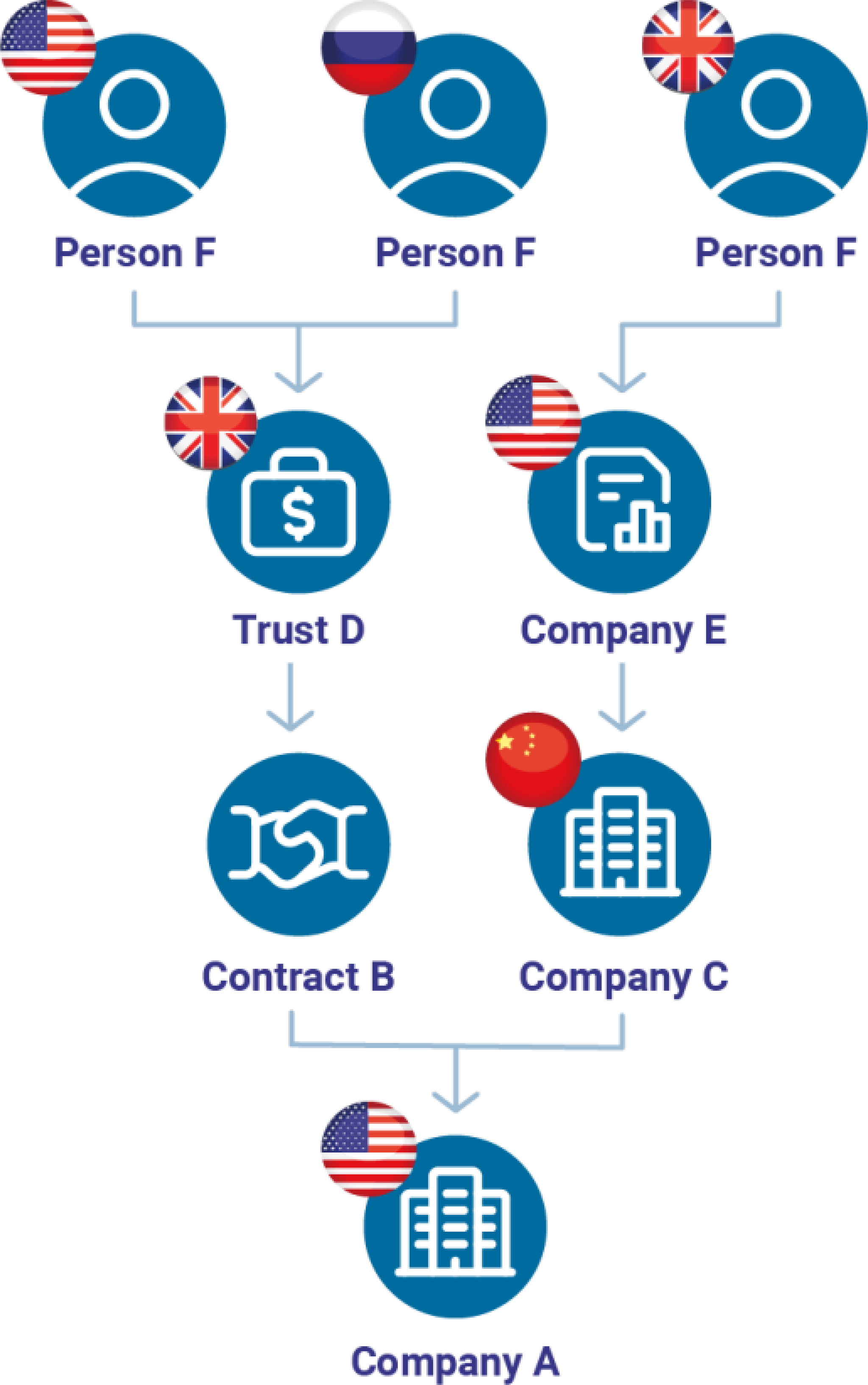Relational database design considerations for beneficial ownership information
2. Key concepts
a) What is beneficial ownership?
A beneficial owner is defined as the natural person that can be found at the end of an ownership chain and who benefits from the existence of the company. Often there is just a single link between a beneficial owner and a company, but sometimes it can include long and complex ownership chains of multiple legal entities.
Ownership and control structures can be complex
People may benefit from company activities through ownership or by exerting another form of control. It is not uncommon for people to hold a mixture of interests in a company which cumulatively make them beneficial owners.
Beneficial ownership differs from legal ownership. Companies can own or control other companies and are known as legal persons. Historically, transparency on company ownership has focused on legal ownership, or the level of ownership immediately above a company.
Company ownership and control can change over time. There are many reasons why stakeholders may benefit from knowing the ownership and control interests in a company at a particular point in time in the past.
Beneficial ownership is international. A full picture of company ownership is difficult to obtain for companies with complicated company structures across multiple jurisdictions. The Beneficial Ownership Disclosure Workbook explores this, along with how it may affect the extent of information disclosed in a register.
There are legitimate reasons why companies may not be able to declare all of their beneficial owners. One of the OO Principles states that “data should be collated in a central register”, but there are nuances around what data should be published. This is explored in OO’s public access briefing.
Beneficial ownership in law: Definitions and thresholds provides definitions and explanations of many terms relating to beneficial ownership that will be used throughout this document.

b) The Beneficial Ownership Data Standard
The Beneficial Ownership Data Standard (BODS) provides a structured data format, along with guidance for collecting, sharing, and using data on beneficial ownership. BODS data is expressed using JavaScript Object Notation (JSON), making it suitable both for publishing online as open data and for transferring between systems as a data exchange format.
Some key characteristics of BODS are detailed below:
i) Statement-based data structure
The aim of a beneficial ownership declaration is to support the connection of entities to their ultimate beneficial owners, and to provide an auditable record of beneficial ownership over time.
There are three top-level JSON objects in BODS. They are:
BODS uses these in linked statements to describe how a person or entity is connected to another entity by means of ownership or control. Linking statements together helps to build up an understanding of ownership chains when beneficial ownership is indirect.
ii) Different categories of ownership and control
A beneficial ownership declaration should be able to describe the many mechanisms by which ownership and control of an entity may be exercised.
BODS contains a codelist of interest types to lay out recommended codes and explanatory descriptions. There is ongoing work to add new codes to that list to support this requirement.
iii) Auditability
A series of beneficial ownership declarations should contain a reproducible audit trail of changes made over time. To achieve this, published BODS statements should be treated as a write-only ledger, with new statements being issued to amend data contained in older statements and those new statements appended to the ledger.
To support auditability, a core requirement of a beneficial ownership database is that it can produce a set of statements that describe the beneficial ownership of an entity at any point in the present or the past. This requires some duplication of core data, resulting in the need for larger data storage.
iv) Identifiers
A beneficial ownership declaration should use identifiers to identify a unique person, entity, or ownership-or-control statement. Ideally, each person or entity should, correspondingly, be identified by a unique identifier in any identification scheme.
Statement identifiers
Advice on the creation of entity, person, and ownership-or-control statements is provided in the BODS documentation. Of key importance is that two different statements SHOULD never have the same identifier, and once an identifier is assigned to a statement, the identifier SHOULD NOT change.
Real-world identifiers
Technical guidance on best practice when it comes to real-world identifiers is provided in the BODS documentation. In particular, it is worth noting that:
- Entity identifiers consist of the scheme and the identifier as separate fields;
- Person identifiers also consist of the scheme and the identifier as separate fields, although they might be held internally, possibly in an encrypted form, and not published.
v) Exemptions and other missing information
When companies are unable to declare information about beneficial ownership, it should be made clear on what basis they are unable to do so.
Both Entity (unspecifiedEntityDetails) and Person (unspecifiedPersonDetails) statements contain objects for declaring missing information. These objects include a value from the UnspecifiedReason codelist and another value with a textual description for any supporting information.